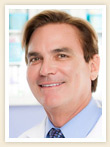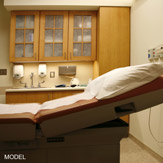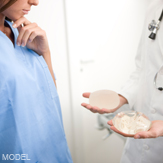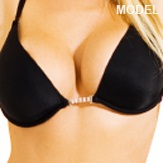Archive for the ‘General Plastic Surgery’ Category
Plastic Surgery Office vs. Medical Spa
As the founder of a Los Angeles plastic surgery practice, I am constantly seeing patients from all over the country for a variety of different procedures and treatments. I’ve noticed that many patients wonder which facility is appropriate for their procedure: a plastic surgery office or a medical spa.
First, I’d like to explain the difference between a plastic surgery office and medical spa facility. It is important to note that not all plastic surgery centers are fully-accredited. What fully-accredited means is that the center has met various national standards for equipment, operating room safety, and both staff and surgical credentials. You should only consider a surgical procedure once you have found a facility that possesses the proper qualifications.
A medical spa is a slightly vague term, as there is no single definition. Medical spas are different than regular spas, as they use medically-based treatments. Common treatments performed at a medical spa include laser skin rejuvenation, BOTOX® Cosmetic, as well as chemical peels. At a medical spa, a physician is onsite and plays an integral role in a patient’s evaluation and care.
In general, if you want to have a surgical procedure performed, it is better-suited for a plastic surgery office. If you are seeking minimally invasive treatments, you may be able to enjoy your procedures at a medical spa.
3 Steps to Evaluating Before and After Photos
A picture is worth a thousand words, but when you’re considering plastic surgery, it is important to understand what to look for. When you evaluate those before and after photos, make sure that the results you desire appear in the “after” photos from your potential surgeon. As a Los Angeles cosmetic surgeon, I advise patients to take the time to examine photos of the procedures they are considering.
While no surgeon can produce the exact same results on two different people, browsing through the photo gallery can help you choose the right professional for you. Here are some tips I’ve created to help you with that task:
- Ask yourself if the results look consistently good. If you notice repeated results that are not what you desire, this is a good indicator that the surgeon may not be right for you.
- Ask yourself if the results look natural and attractive. A good surgeon will create results that appear naturally beautiful.
- Notice if there are any specific techniques a surgeon is using. If the surgeon uses a special technique and you like the results, you may want to compare results only to others who perform the same technique.
Do remember that results will differ for each individual, depending on that person’s natural body shape or type. If you are satisfied with the before and after photographs of the procedure you are interested in, consulting with that surgeon will help determine if that specialist is right for you, as well as whether you are a good candidate for that specific procedure.
5 Ways to Avoid Pain after Surgery
Even with modern techniques and technology, some degree of discomfort will occur following most Los Angeles plastic surgery procedures. Tolerance of discomfort differs from patient to patient, and also depends on the type of surgery performed. Although it is an unavoidable aspect of plastic surgery, there are steps that you can take to ensure that you will feel as comfortable as possible after your procedure.
- Walk around. Begin walking around as soon as you receive clearance from your plastic surgeon to do so. Being mobile helps your circulation.
- Drink plenty of fluids. It is common to be dehydrated after a surgical procedure. Drink water, soup, or fluids to replace electrolytes after your surgery as instructed so your body is ready to take care of itself.
- Get enough sleep. Making sure you are getting the proper amount of sleep each night will help your body recover quickly.
- Take any prescription as indicated. Many pain medications contain anti-inflammatory agents to reduce swelling, which can help tissue repair particularly during the first few days after surgery.
- Alert your doctor about any allergies. Talk with your doctor before your procedure about any medicines you may be allergic to. Also, be sure to closely follow all post-surgical instructions your doctor provides.
Breast Augmentation Incision Options
When considering breast augmentation, how do you know which incision method is appropriate for you? There are four common incisions that are typically employed; however, not all surgeons perform all of these techniques. The four main methods are:
- Periareolar incision (around the nipple)
- Inframammary fold (under the breast)
- Transaxillary incision (through the underarm)
- Transumbilical incision (through the belly button)
I take the time to guide my Los Angeles plastic surgery patients considering breast implants about their incision options. Experienced breast augmentation surgeons are the most helpful resource for women who want to understand these options in depth. When making a recommendation, several factors will be taken into consideration, such as your anatomy, your goals, as well as the type and size of your breast implants.
There are, of course, benefits and drawbacks to each incision method offered. The inframammary fold is one of the most commonly used incisions. This allows the surgeon full access to and clear visibility of the implant pocket. The periareolar incision, created around the nipples where they meet the breast skin, is also a popular choice due to the fact that resultant scarring can blend in to the texture and color of the areola. Also, the implant can be placed precisely in the pocket with this method. The transaxillary and transumbilical incisions are advantageous because they leave no scar on the breast, but many surgeons do not offer these incision options because access to the implant pocket is indirect.
How do you choose? Discuss your goals openly and honestly with your surgeon to find the appropriate incision method for you.
Do I Have to Give Up Smoking Before Surgery?
As a Los Angeles plastic surgeon, I have come across many patients who wonder if they really need to quit smoking before having a surgical procedure. To be clear, smoking is one of the worst things you can do voluntarily to negatively impact your health. I would be hard-pressed to find a person who hasn’t heard of the negative effects of smoking these days. Without going through a laundry list of why smoking is bad for you, let’s look at it from a surgical perspective.
Smoking before your surgery can lead to the following problems:
- Increased bruising
- Respiratory problems
- Increased risk of infection
- Poor scarring
I understand that for many of my patients, giving up an addictive habit that is part of an everyday routine can be very difficult. But it is important that you consider the risks when you prepare for your surgical procedure. It is recommended that a patient quits smoking at least a month before their surgery, as smoking lowers the body’s ability to deliver important oxygen to all of the organs. This is very crucial during surgery as well as recovery.
So if you’re considering a cosmetic procedure, consider what smoking will do to your surgery and recovery – not to mention your overall health and happiness.
Breast Implants and ALCL
In the last few days I have received questions from several patients who heard about the U.S. Food & Drug Administration’s recent guidance regarding a possible connection between breast implants and anaplastic large cell lymphoma (ALCL). Both for women who have implants and those who are considering a breast augmentation procedure, I would like to provide more information about this guidance and suggest some next steps.
What the FDA Is Doing
An initial review by the FDA has identified 34 unique cases of ALCL in women with breast implants throughout the world. To put this in perspective, it is estimated that 5 to 10 million women worldwide have breast implants. The FDA believes that women with breast implants may have a very small but increased risk of developing this disease, and is asking health care professionals to report confirmed cases of ALCL in women with breast implants to the FDA.
What the FDA Is Not Doing
The FDA is not taking back its approval of saline and silicone gel breast implants. To quote the organization: “The FDA believes that the totality of evidence continues to support a reasonable assurance that FDA-approved breast implants are safe and effective when used as labeled.”
What You Need to Know
If you have had breast augmentation, I advise you to continue to follow your doctor’s regular implant care instructions. Because ALCL is not a breast cancer, there is no benefit to performing additional self exams, but it is worth talking with your surgeon in more detail if you are particularly concerned, if only for added peace of mind.
For women who are thinking about breast augmentation, it is important to get the latest facts. Additional fact finding on this issue will be ongoing and informed surgeons will be able to give you the most current information while providing additional context for the scientific findings so far.
Is Post-Op Breast Asymmetry a Sign of a Bad Surgeon?
During consultations, I hear from some women that they are concerned about having asymmetry after breast surgery. Many of my breast augmentation patients felt anxious as they searched for a Los Angeles or Santa Monica plastic surgeon. They want to feel confident in their choice and, most of all, want to enjoy “perfect” results from their surgery.
A few years ago, a study of breast asymmetry found that after breast augmentation, 88% of patients had some degree of asymmetry and 65% of the women had more than one type of asymmetry. These numbers may seem very high, but before we start questioning the skills of plastic surgeons, we should consider the issue from every angle.
While a beautiful result is always the goal, some asymmetry is simply a result of each patient’s unique physiology. For instance, asymmetry following breast augmentation may be the result of slight pre-op asymmetry that has been magnified by the increase in breast size. However, skilled surgeons can minimize asymmetry by:
- Performing a thorough chest wall evaluation before surgery to determine your individual needs
- Carefully choosing your implant size, profile and placement based on your physiology
- Using an areolar (around the nipple) incision to ensure areolar symmetry (if necessary)
- Performing a breast lift in conjunction with augmentation
- Considering inframammary fold position before surgery to help prevent the implants settling in different positions.
Choosing a surgeon who is highly qualified can help prevent some of these issues, but keep in mind that asymmetry is a natural occurrence. Discussing your concerns with your surgeon is a great way to ease your anxiety and find out what he or she can do to help improve your symmetry after surgery.
A Global Perspective
Recently the ISAPS (International Society of Aesthetic Plastic Surgery) released a “Biennial Global Survey” for plastic surgery procedures (learn more about it here). They compiled a list of the top procedures (both surgical and non-surgical) and the top 25 countries and regions where plastic surgery is most popular, which represented 75% of all cosmetic surgery procedures in 2009.
The United States leads the survey as the country with the most plastic surgery procedures, with China and Brazil rounding out the top 3. The survey may surprise people because of the inclusion of several countries that are not commonly associated with plastic surgery, such as India, Germany and Argentina. Another interesting result of this survey is that breast augmentation is no longer the most popular procedure worldwide; it is now replaced by liposuction.
As a board-certified Los Angeles plastic surgeon, I believe that this survey enables us to see plastic surgery from a different perspective. We are now able to look at this topic from a global standpoint and compare on a geographical level, by comparing trends by country or even region. Although this may not be the first time plastic surgery statistics for other countries have been released, reliable and credible statistics are few and far between, and I think some more detailed analysis of the data will reveal interesting trends in beauty across and inside different cultures.
If you’ve taken a moment to look at the stats, what is interesting or surprising to you? I welcome your thoughts.
Plastic Surgery 2009 Conference: What Did I Miss?
A few weeks back was Plastic Surgery 2009 in Seattle, WA. This is an important conference for many plastic surgeons and, as it turns out, for many patients. As a Beverly Hills area plastic surgeon, I always look forward to seeing what comes out of these conferences so that I can implement it in my practice. I thought I’d take a moment to share why the annual conference is so important.
What’s the Big Deal?
There’s a lot to be said for gathering together a large group of surgeons united by a common passion for cosmetic and reconstructive surgery. Inevitably, there are going to be some great ideas that come out of it. This was the goal behind Plastic Surgery 2009, and it was accomplished in several ways:
- Networking opportunities. For example, the Welcome Reception and Closing Session gave attendees the opportunity to mingle outside the structured environment of roundtable discussions or educational courses. Here, surgeons were able to share their experiences, learning from each other in the process.
- Continuing education courses. Topics this year ranged from skin rejuvenation with lasers, to breast reconstruction, to the prevention of surgical site infection, and much more.
- Lectures. Experts discussed topics such as breast shaping with hyaluronic acid injectables.
- Panel discussions. Panels were held about the cultural influences of breast implant selection, military plastic surgery, and other issues.
- Exhibits from companies such as Allergan (makers of BOTOX® Cosmetic and JUVÉDERM® Injectable Gel), Obagi Medical Products, and LifeCell.
What It Means for You
Events like this play a vital role in advancing the field of plastic surgery in California and the rest of the country. They provide an environment that fosters new ideas and technologies. They help plastic surgeons learn more about the latest developments in their field. They can also be a place where surgeons can build new or strengthen old relationships with one another, creating partnerships that reward patients with improved care.
So, to sum it all up – while it may be hard to trace, the conference this month could make your future surgery even better.
Dr. Grant Stevens

I am a board-certified Beverly Hills plastic surgeon with over 20 years of experience researching and implementing new approaches to plastic surgery. At Plastic Surgery Insider, you get the benefit of my experience and authority when you read my perspectives on the latest news and procedures in plastic surgery.
More on my qualifications »

Popular Topics
Archives
- August 2013
- July 2013
- June 2013
- May 2013
- April 2013
- February 2013
- January 2013
- December 2012
- November 2012
- October 2012
- September 2012
- August 2012
- July 2012
- June 2012
- May 2012
- April 2012
- February 2012
- January 2012
- December 2011
- November 2011
- September 2011
- August 2011
- July 2011
- June 2011
- May 2011
- April 2011
- March 2011
- February 2011
- January 2011
- December 2010
- November 2010
- October 2010
- September 2010
- August 2010
- July 2010
- June 2010
- April 2010
- February 2010
- January 2010
- December 2009
- November 2009
- October 2009









